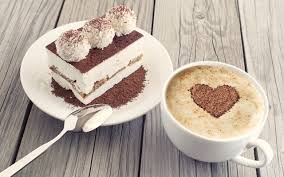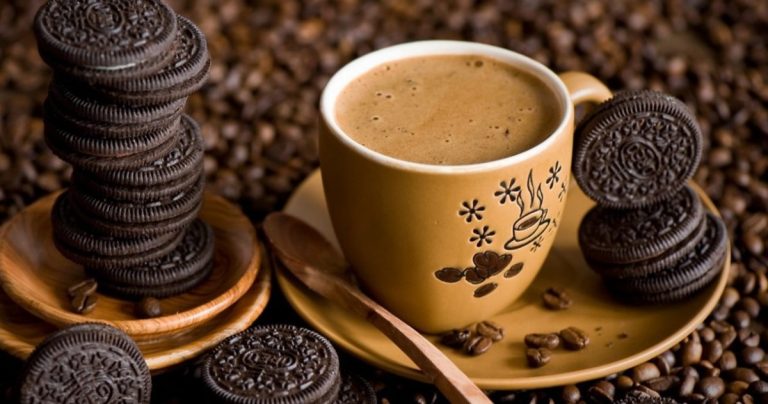Sooner or later, igur-conscious people ask themselves how many calories are in coffee. The good news is that coffee itself has no calories. The bad news: Coffee variations such as cappuccino, latte macchiato and Co. make a big difference. Find out here what the calorie count of coffee is.
Whether for breakfast, in the office or after a delicious meal, coffee is one of the most popular beverages around the world. But do you know how many calories coffee has? This question divides minds: While some claim that the hot drink even helps you lose weight, others say that it can be a real calorie trap. But which of these is true now? The answer: both! But from the beginning…
What are calories anyway?
Calories are known to be those little animals that sew clothes tighter at night. No, seriously – first of all, calories are actually kilocalories, abbreviated to kcal. This is nothing other than the unit that indicates the energy contained in food. The precise definition is:
One kilocalorie of a certain food supplies exactly the energy required to heat up one liter of water by one degree Celsius.
If you want to lose weight, you have to consume fewer calories than your body actually burns. All those who want to gain weight must consume more calories than they burn. The average calorie requirement per person is around 2000 kcal.
However, factors such as gender, height, weight and level of activity also play a decisive role. For example, a tall, physically active person burns more calories per day than a smaller person who hardly moves.
A lightweight: coffee itself is low in calories
Coffee drinkers who enjoy their drink black can rejoice: there are actually no real coffee calories. However, if you take it very seriously, a normal cup of coffee has just 4 kcal. A regular espresso only has 2 kcal per cup. These are indications that figure-conscious people can certainly neglect in their diet.
On the contrary, black coffee can even be beneficial for burning energy. Because the drink can boost the metabolism in the body and ensure that fat is burned faster. The popular hot drink helps with weight loss. However, this only applies to active people who exercise, and only to black coffee without any additives.
Milk and sugar make coffee a calorie trap
Unfortunately, not all coffee is created equal. What you put in the coffee is also decisive for the calorie count. This means sugar and milk. If you like sweetening your coffee, add 20 kcal per teaspoon of sugar. Milk also contains calories, more or less depending on the fat content. For example, if you add a third of whole milk to your cup of coffee, you will consume 40 calories.
Coffee types such as latte macchiato or cappuccino that contain milk and sugar also have more calories. The more of it is drunk, or the more milk and sugar it contains, the more calories the drink has.
Of course, coffee can also cause weight gain because the body is supplied with energy that first has to be burned off again. This means that what is actually a low-calorie drink can quickly become a calorie trap.
Overview: This is how many calories coffee and individual types of coffee have
Because coffee has many facets, the calorie information varies accordingly. To give you an overview of which varieties contain the most calories, we have sorted the drinks according to their nutritional value:
Pretty figure-friendly: A cup of espresso has just 2 kcal.
The following applies: the purer, the better. Even a cup of black coffee doesn’t matter. She comes to 4 kcal.
A cup of latte that consists of half low-fat milk and half coffee has about 65 kcal.
All cappuccino lovers consume just over 90 kcal with a cup of their beloved pick-me-up. Each teaspoon of sugar adds 20 kcal.
A latte macchiato also has almost 100 kcal due to the milk. With the whole milk variant, it can quickly become 150 kcal. That doesn’t even include the sugar.
Minimize calories in coffee – this is how it works
Anyone who pays attention to their diet and energy intake in order to maintain their weight or even lose pounds should opt for the lower-calorie coffee variants.
If you don’t want to do without latte macchiato or cappuccino, it’s best to choose low-fat milk. Instead of milk, you can also use milk substitutes such as soy or almond milk. This reduces the number of calories, the coffee gets a pleasant aroma and people with lactose intolerance can also enjoy it without regret.
You should avoid sugar if possible. However, if you really need something sweet in your coffee, you can use sugar substitutes. Try it with sweeteners from the health food store such as agave syrup, maple syrup or stevia. These substitutes contain significantly fewer calories than sugar, but still taste almost as good.
You should also be careful with coffee variations that you get on the go. Here, large mug coffees can contain added syrup and cream and can quickly exceed the 300-calorie mark. Then the drink sometimes turns into a small meal, at least if you go by the calorie count.

